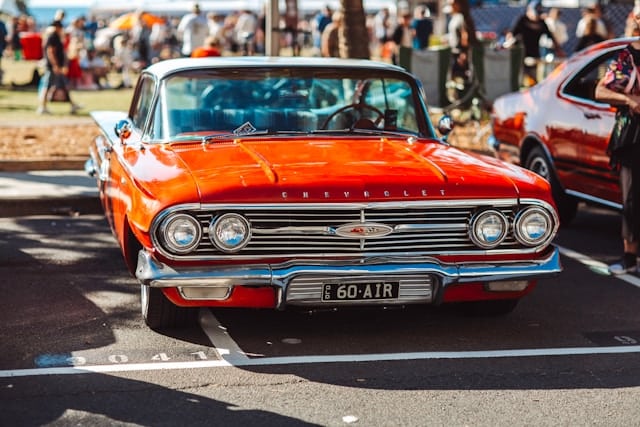How to Install a Secondary Air Injection System for Emissions Control in a Classic Chevy?

The resurgence of classic cars is more than just a fad. It’s a love affair with nostalgia, the throbbing of the engine, and the glint of chrome that lures many to restore these beauties. But, there’s a catch. Emissions. Today’s environmental regulations make it mandatory for car engines, regardless of their age, to conform to emission standards. So, if you’ve got a classic Chevy in your garage, a secondary air injection system could be your solution to meet these regulations. In this comprehensive guide, we’ll walk you through the steps to install this system into your classic Chevy, helping you to reduce harmful emissions and enjoy your ride guilt-free.
Understanding the Secondary Air Injection System
Before we delve into the installation process, it’s vital to comprehend what a secondary air injection system is and why it’s crucial for your classic Chevy. Essentially, this contraption, also known as the smog pump, introduces fresh air into the exhaust stream to promote the burning of leftover fuel, thereby reducing harmful emissions. Given the older design of classic Chevys, they are likely to emit a higher level of pollutants, thus making the secondary air injection system an essential addition.
Dans le meme genre : Is a High-Flow Air Filter Beneficial for Fuel Economy in a Toyota Corolla?
In a typical setup, the secondary air injection system consists of several key parts like the air pump, check valve, and an assortment of hoses and belts. The air pump, generally driven by the engine via a belt, is the heart of the system. It pushes fresh air into the exhaust system, where it combines with the unburnt fuel to reduce harmful emissions.
Choosing the Right Location
Deciding on the right location to install your secondary air injection system is critical. Remember, the position of the pump will affect the overall efficiency and performance of the system. Generally, the pump is mounted on the engine, often at the front, where it can be easily driven by the belt system.
Sujet a lire : Can Upgrading to LED Taillights Improve the Visibility and Safety of an Older Ford Escort?
Ensure that the chosen location allows the pump to be firmly mounted, is easily accessible for future maintenance and doesn’t interfere with any other engine parts. If you’ve received a system with a pre-designed mounting bracket, use it as a guide to select the appropriate location.
Installing the Air Pump
Once you’ve selected a suitable location, it’s time to install the air pump, the main component of the secondary air injection system. Begin by securing the pump to the engine using the mounting brackets provided. Make sure it’s firmly attached and can withstand the vibrations generated by the engine.
Next, connect the drive belt. Make sure it’s adequately tensioned – a slack belt will reduce the pump’s efficiency while an overly tight one can cause premature wear on the pump bearings.
Setting Up the Check Valve and Air Hoses
The next part to install is the check valve. This valve prevents the backflow of exhaust gases into the pump, protecting it from damage. The valve usually attaches to the exhaust manifold and must be fitted with extreme care to prevent leaks.
After the check valve is in place, attach the air hoses, ensuring a secure fit at all points. These hoses carry fresh air from the pump to the exhaust system and should be routed away from any hot or moving parts to prevent damage.
Joining an Auto Enthusiast Community
While this guide provides a comprehensive overview of installing a secondary air injection system in a classic Chevy, the process can still be tricky, especially for first-timers. Therefore, don’t hesitate to join an automotive enthusiast community or a classic Chevy owners’ group.
These communities often have discussion threads on various topics, where members share their experiences, tips, and tricks. If you’re stuck at any stage of the installation, post your queries here. You’ll likely receive plenty of useful replies and suggestions from like-minded individuals who have gone through the same process.
Remember, reducing emissions from your classic Chevy is not just about compliance with regulations. It’s about doing your part for the environment. By installing a secondary air injection system, you’re ensuring that your love for classic cars doesn’t impact the air we all share. So, get your tools ready, roll up your sleeves, and with this guide in hand, turn your classic Chevy into an environment-friendly ride.
Operational Testing and Initial Start-up
After installing all the components of the secondary air injection system, it’s now time to do an operational test. During this stage, you’ll ensure the system works correctly within your classic Chevy’s engine setting.
Start by turning on your car engine, allowing it to run at idle speed. Monitor the system for any unusual noise or vibration. If your air pump is louder than average, this could indicate a problem, such as a loose belt or a misaligned pump. Readjust the system as necessary until the noise diminishes to a normal level.
Inspect carefully for any leaks around the air hoses and the check valve. If you find any, make sure to tighten the connections further or replace any faulty parts. A leak in the system can dramatically reduce the effectiveness of the secondary air injection system, leading to increased emissions.
Don’t forget to check the drive belt tension regularly, especially during the first few days after the installation. A newly installed belt may stretch and loosen, reducing the efficiency of the air pump.
Regular Maintenance and Care
Just like any other part of your car, your secondary air injection system also needs regular maintenance to ensure its functionality. A good way to start is by regularly inspecting the air pump and the smog pump for any signs of wear and tear. Pay special attention to the drive belt and hoses. Replace these parts as needed to maintain the system’s effectiveness.
Don’t ignore the diverter valve either. This valve plays a vital role in controlling the flow of air in the system. If it gets clogged or malfunctions, it could lead to increased emissions. Clean and check this part regularly to keep the system running smoothly.
Remember, every member who join your auto enthusiast community has a shared responsibility. Regular maintenance of your secondary air injection system not only allows you to enjoy a smoother ride but also contributes to a healthier environment.
Conclusion
Installing a secondary air injection system in your classic Chevy does not have to be daunting. With the right information, tools, and a bit of patience, you can successfully undertake this project. This step-by-step guide aims to provide you with the necessary know-how to get started.
However, keep in mind that this process involves a certain level of mechanical skill. If you’re unsure at any point, don’t hesitate to seek help from your auto enthusiast community. You’ll be gratified by the number of likes received on your posts and the valuable advice from fellow members.
By adding a secondary air injection system, you’re not just complying with regulations. You’re also making a conscious effort to reduce your classic Chevy’s emissions, contributing to a cleaner environment. So, don’t let those posts likes or received likes from fellow supreme member or senior member distract you. Instead, use them as motivation to transform your car into an eco-friendly machine.
So go ahead, fire up that engine, and take pride in the roar of your classic Chevy that now comes with less guilt and more green. Happy motoring!
